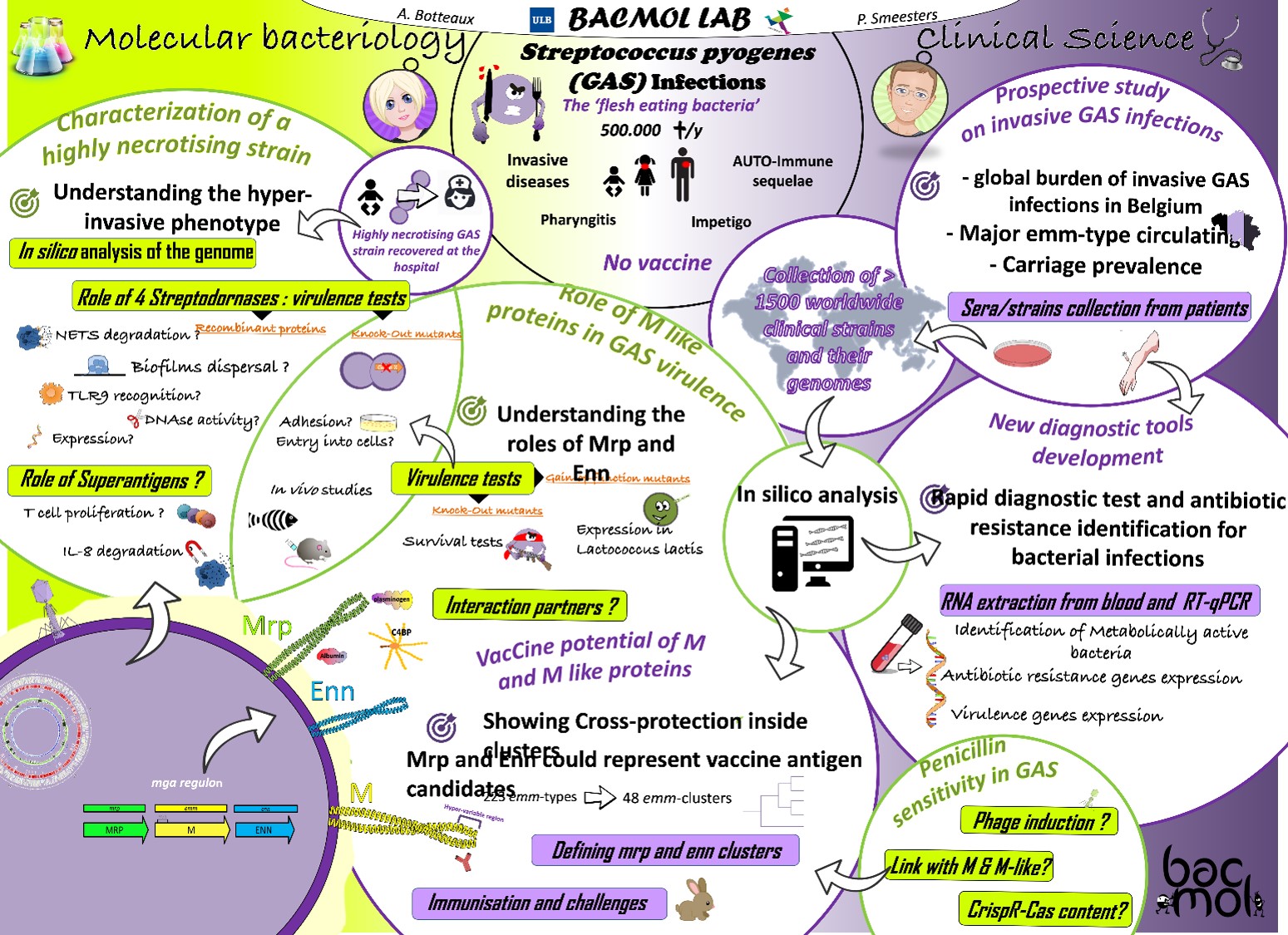
Bacteriology research

Research
Description

People
Description

Selected publications
Description

Contact
Description
Our research
Our translational research line in interdisciplinary in essence and based on skills in infectious diseases, pediatrics, microbiology, genetics, bioinformatics, immunology and public health. Based on strong basic science skills in bacteriology, our goal is not only to increase basic scientific knowledge in Strep A infections but also to deliver practical solutions to patients and health care professional such as new vaccine antigens, new diagnostic tests and hopefully new drug targets. The academic background of the two PI from our Lab (P Smeesters as Paediatrician and clinical-scientist and A Botteaux as basic science microbiologist) illustrates the interdisciplinary philosophy of our research group. Our research focus on a particularly aggressive bacteria called Streptococcus pyogenes (Strep A). We aim to better understand the virulence pathways this bacterium uses when infecting humans. Special focus is made on surface and secreted proteins that could play a pivotal role in infections and be used as vaccine antigens. We are also interested on understanding the tissue tropism of Strep A (skin and throat) in order to analyze more precisely the transmission of strains in vulnerable populations and phages-StrepA interactions to potentially develop lytic phages against StrepA.
The research line from the bacteriology research group is multidisciplinary and lies at the crossroad between microbiology, genetics, bioinformatics, immunology, infectious diseases, paediatrics and public health. Most of our current projects use Group A streptococcus (GAS) as a model system. Our lab is currently developing new vaccine formulations against GAS and performing the molecular characterisation of GAS virulence determinants as well as bacteriophage-GAS interactions.
Our team

Pr. Smeesters is a paediatrician by training, he has spent half of his career working in basic science laboratories (ULB (IBMM), University of Melbourne, Queensland Institute for medical research, and Murdoch Children research Institute, Australia) working on Strep A virulence. He is also the head of the paediatric department at the Queen Fabiola Children Hospital, Brussels University Hospital, ULB.
Pr. Smeesters is a paediatrician by training and has spent half of his career working on Strep A virulence in basic science labs. He is also the head of the paediatric department at the Queen Fabiola Children Hospital, Brussels University Hospital, ULB.

Pr. Botteaux is a microbiologist by training with strong experience in molecular bacteriology and interest in the clinical applications of basic science experimental results. She is co-heading the Bacmol lab and is a professor of host-microbe interactions at the ULB Faculty of Medicine and at the Brussels School of Engineering.
Pr. Botteaux is a microbiologist by training with expertise in molecular bacteriology and interest in translational medicine. She is co-heading the lab and is a professor at the Faculty of Medicine (ULB) and at the Brussels School of Engineering.
